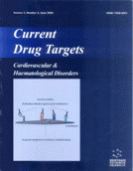Abstract
For over 50 years, acetaminophen (paracetamol) has been a staple in industrialized and non-industrialized countries for the treatment of pain and fever. Although its precise mechanisms of action are not known, the drug generates dose-dependent reduction in circulating prostaglandins, inhibits myeloperoxidase and the oxidation of lipoproteins, and appears to confer cardioprotection by blocking the effects of hydroxyl radical, peroxynitrite, and hydrogen peroxide. The drug might inhibit cyclooxygenase, although its ultimate target(s) is (are) still unclear. Sadly, since most investigations of acetaminophen have focused on its analgesic/antipyretic properties and hepatotoxicity, the effects of the drug on other mammalian organ systems, including the heart and circulation, have been ignored. Recently, work in our laboratory has shown acetaminophen to have a protective role in the injured mammalian myocardium. The cardioprotection was first observed in isolated, perfused guinea pig hearts subjected to ischemia-reperfusion injury. Hearts pretreated with acetaminophen recovered greater ventricular function and exhibited improved myofibrillar ultrastructure when compared to vehicle-treated hearts. More recent in vitro investigations have suggested protective roles for acetaminophen in barbiturate-induced arrhythmogenesis and myocardial hypoxia-reoxygenation injury. We have also extended our work to the in vivo arena. There, we found that acetaminophen reduced infarct size in dogs exposed to 60 minutes regional myocardial ischemia and 180 minutes reperfusion. We invite and encourage readers of this review to repeat/duplicate our experiments. Such work is needed to either challenge or support our findings. Further, more clinically-relevant work depends on these basic and related translational experiments.
Keywords: cyclooxygenase, ischemia-reperfusion, myocardial infarction, hypoxia-reoxygenation, antiarrhythmic, cardioprotective, matrix metalloproteinase, mitochondrial permeability transition pore
 2
2













